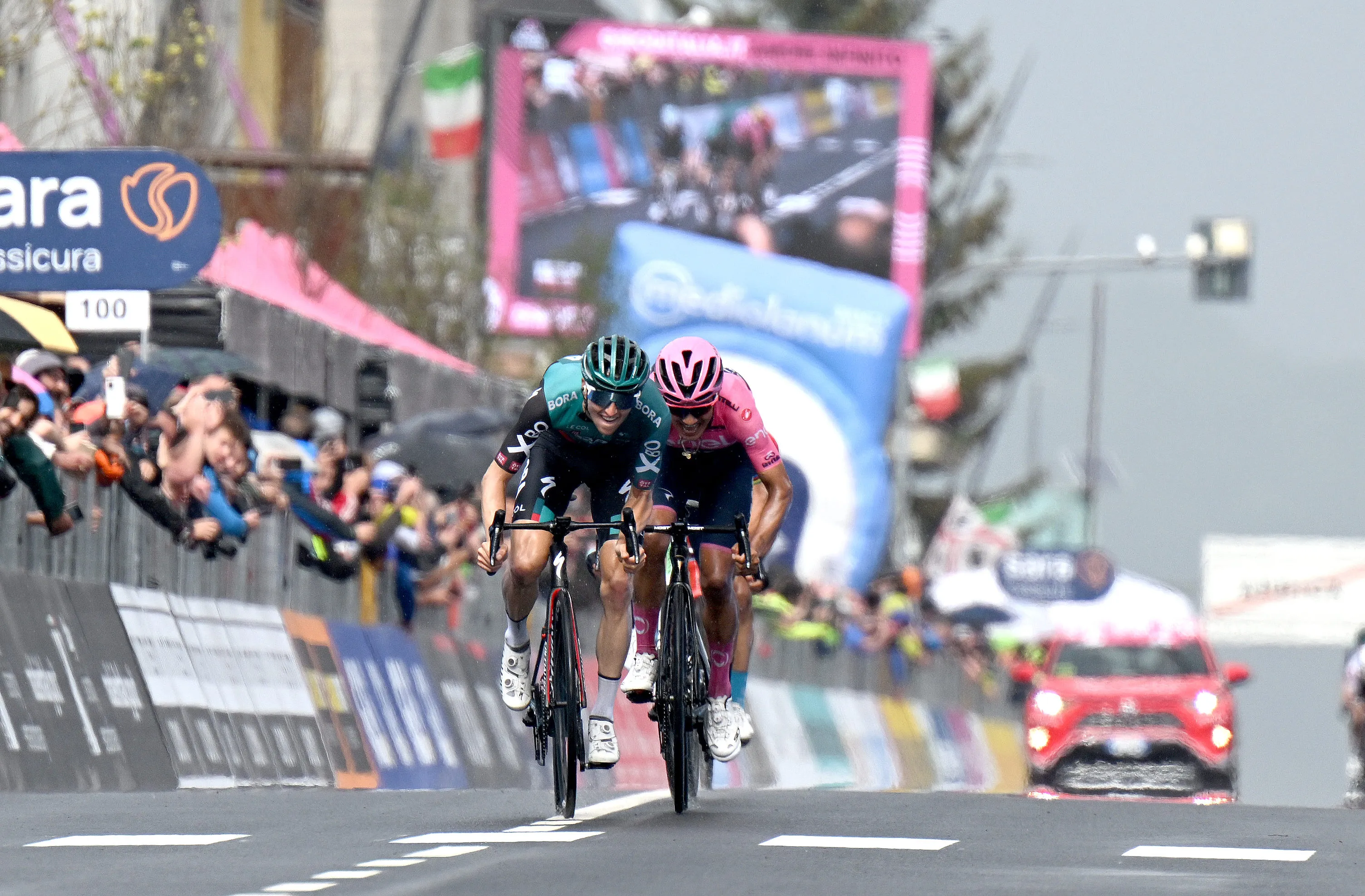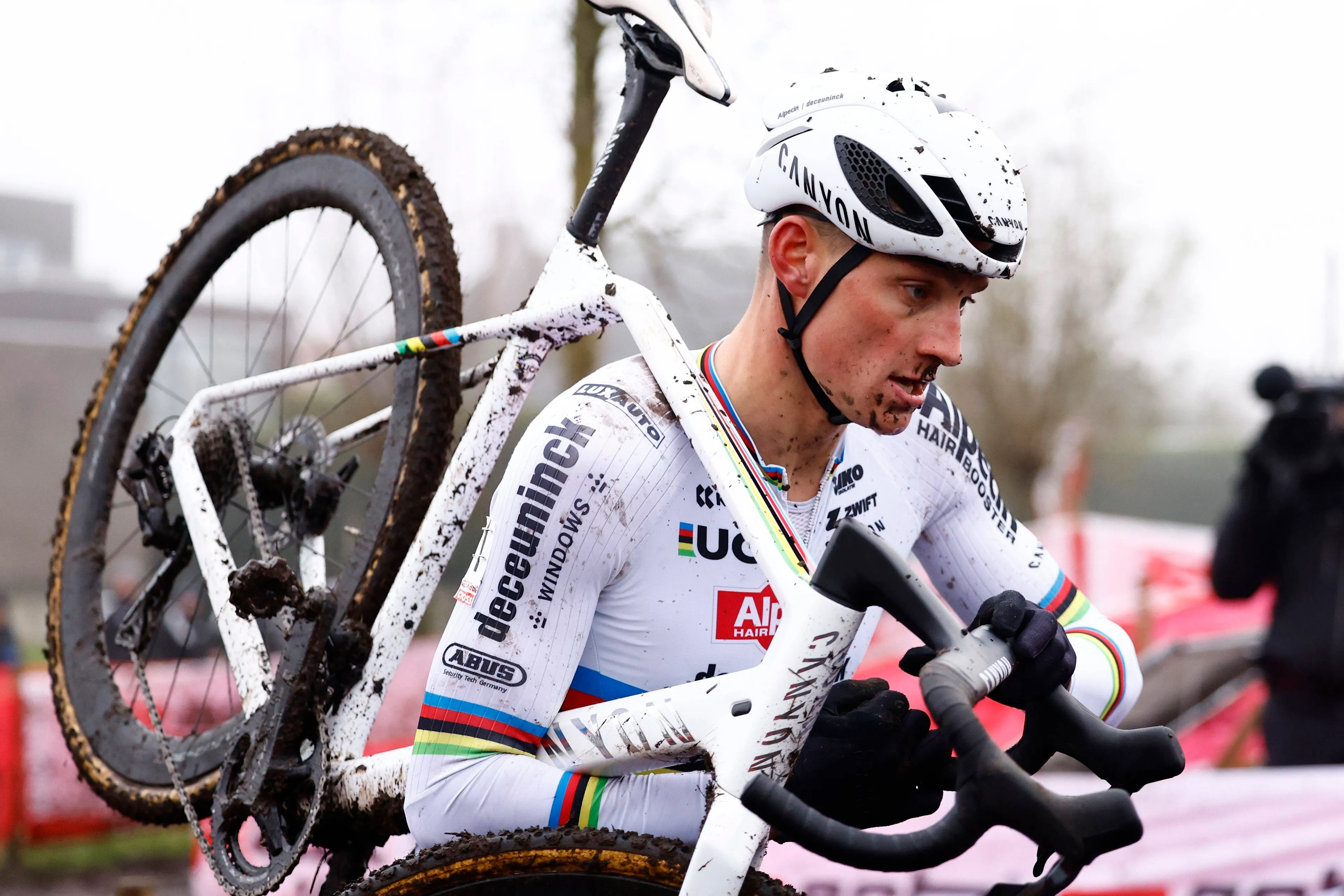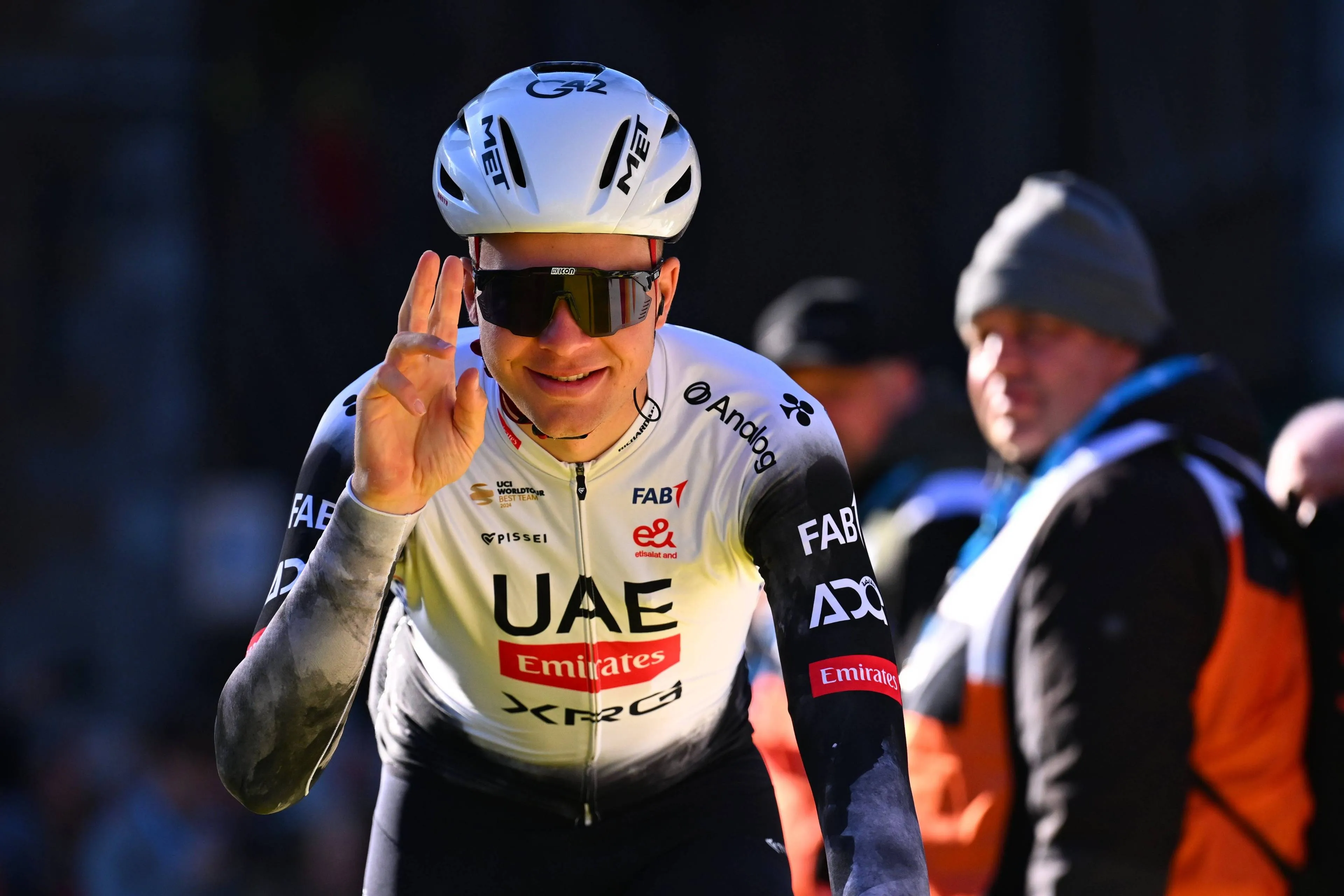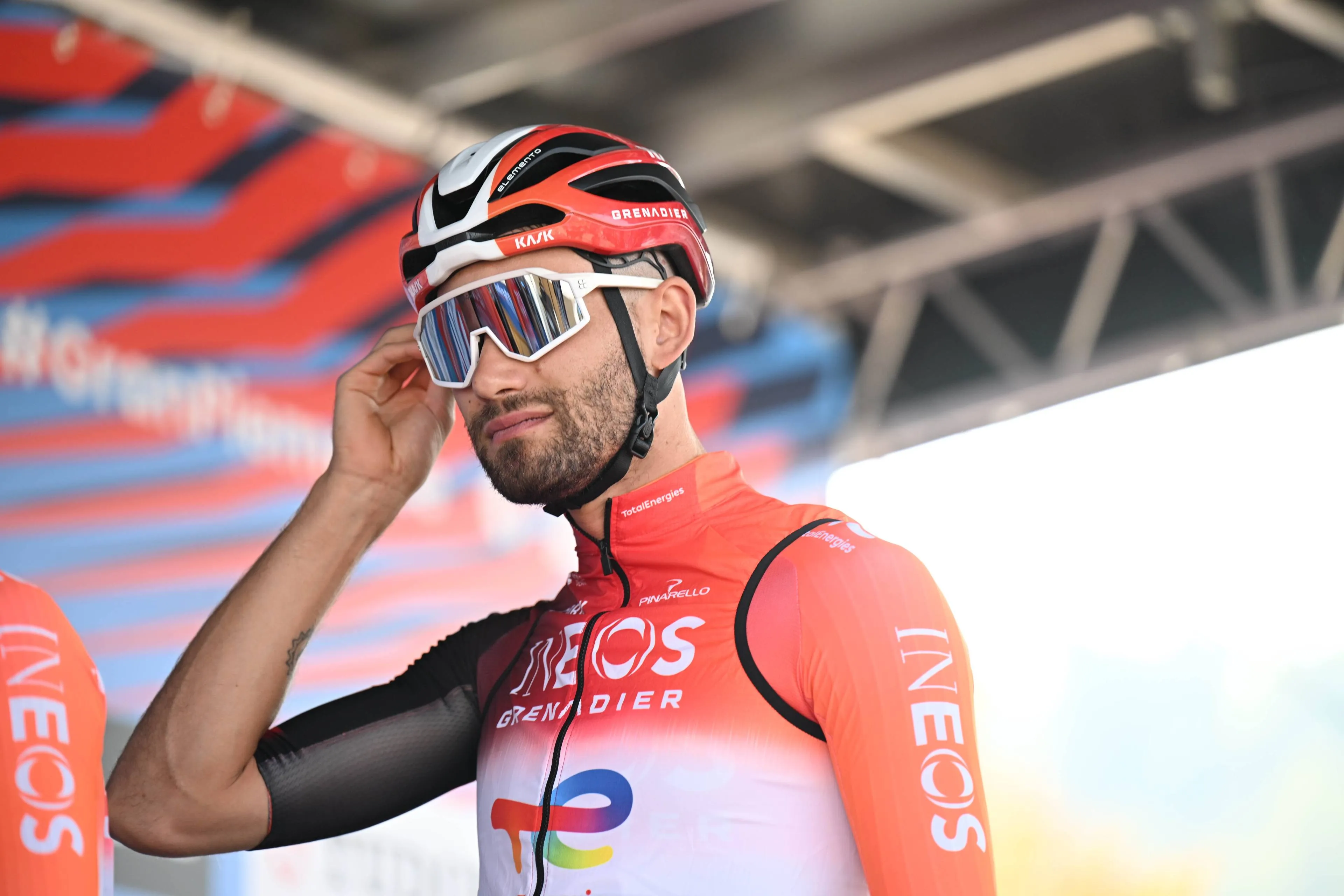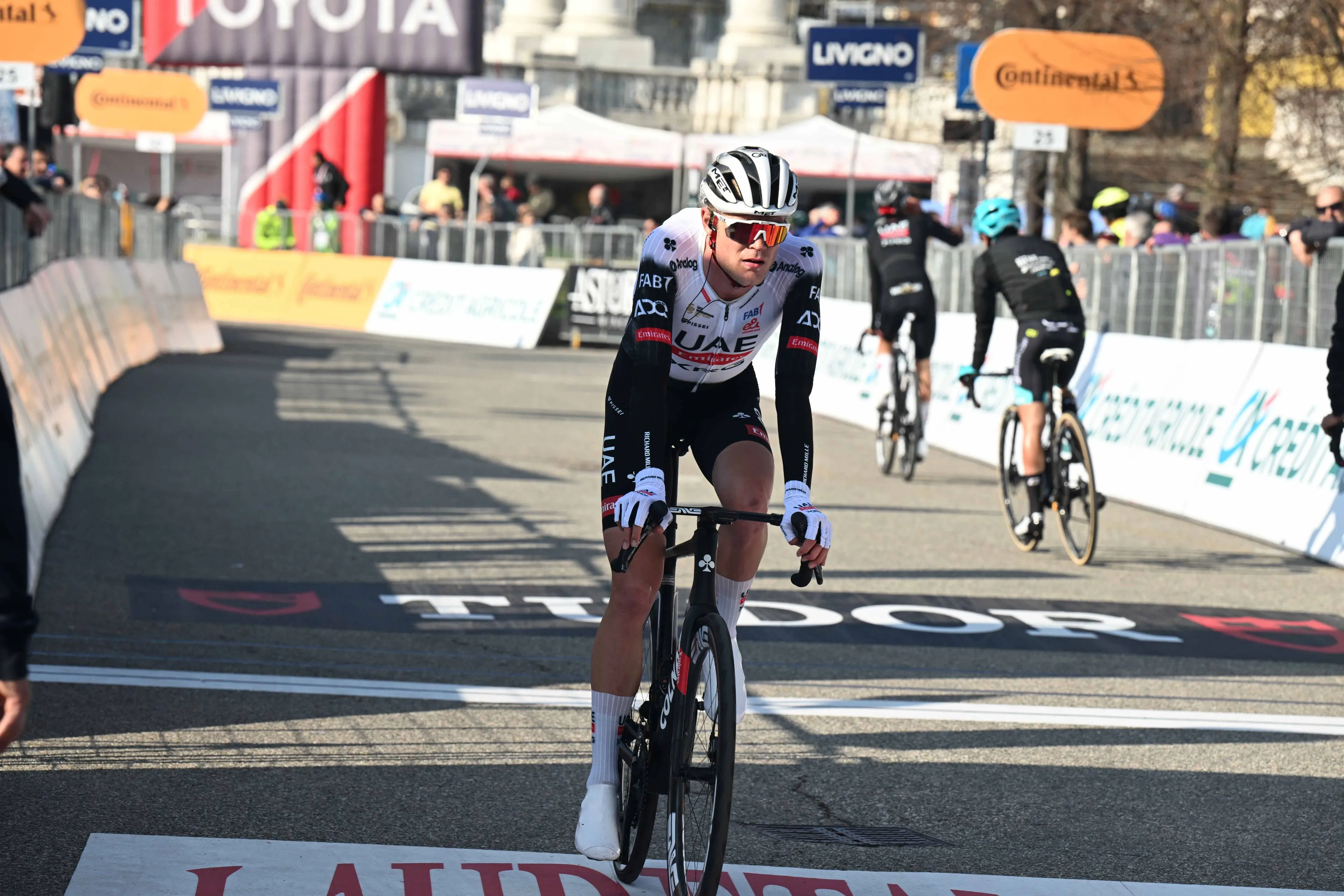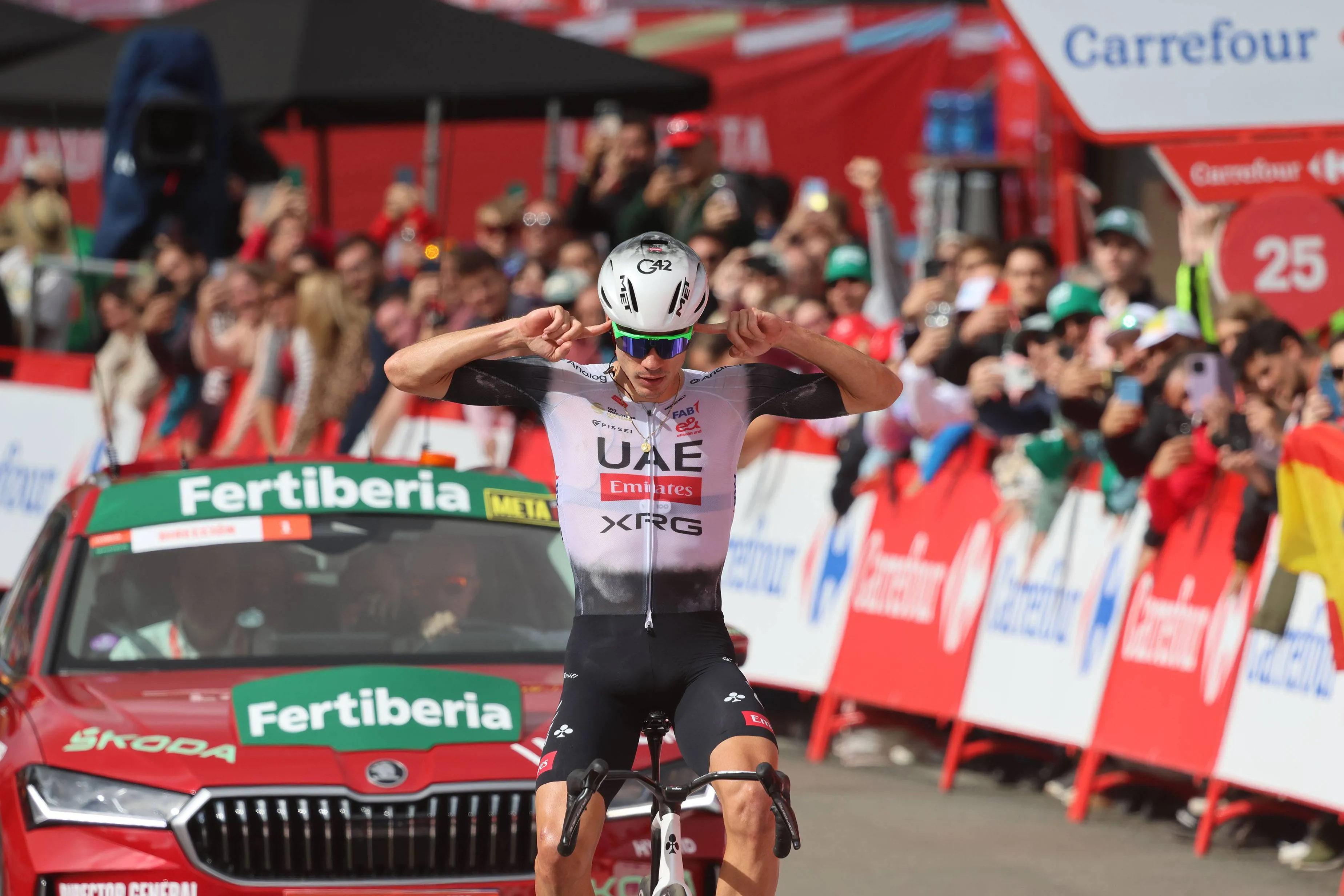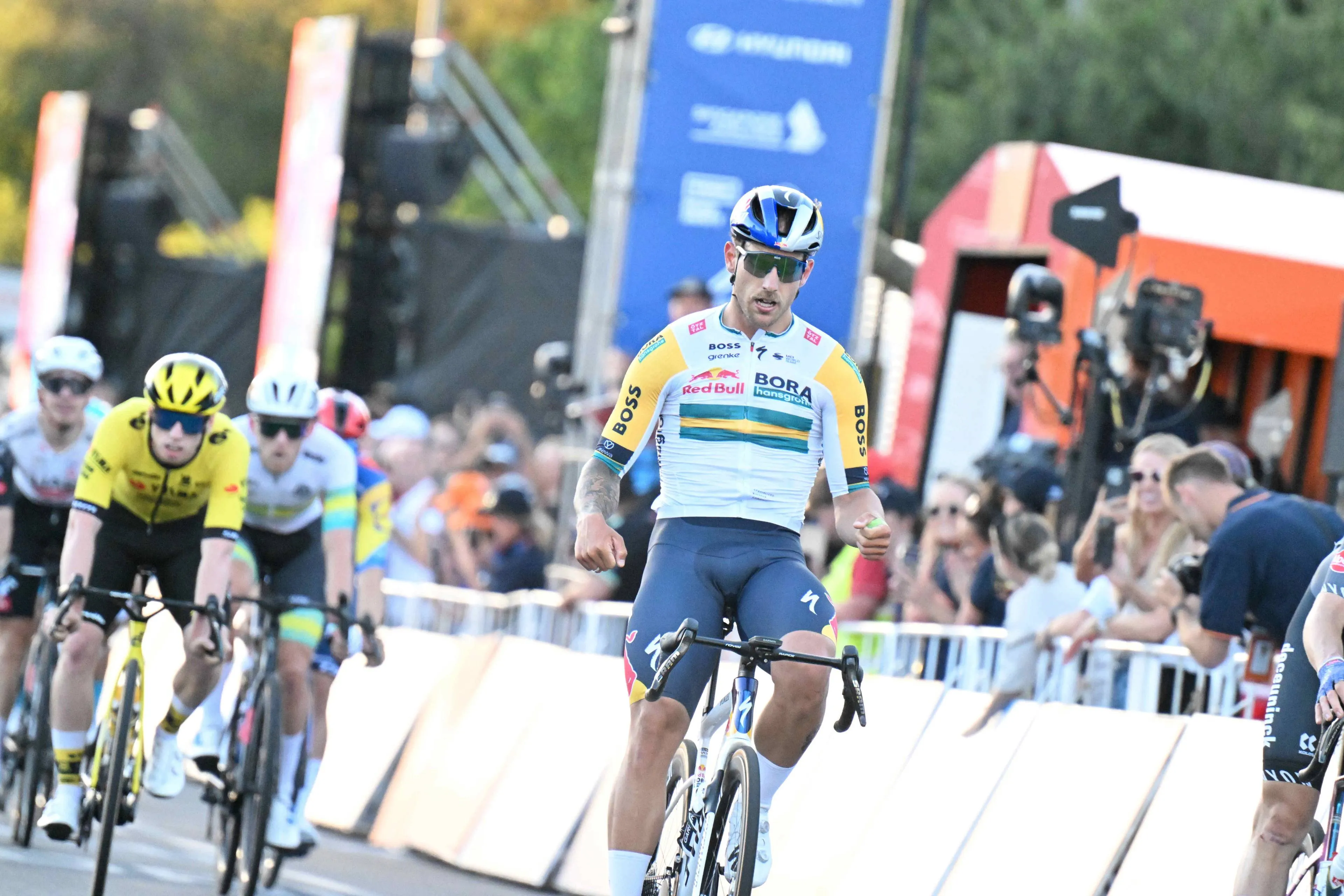Vuelta a Espana 2022 Stage Analysis | Profiles Vuelta a Espana 2022
CyclingThursday, 18 August 2022 at 10:41
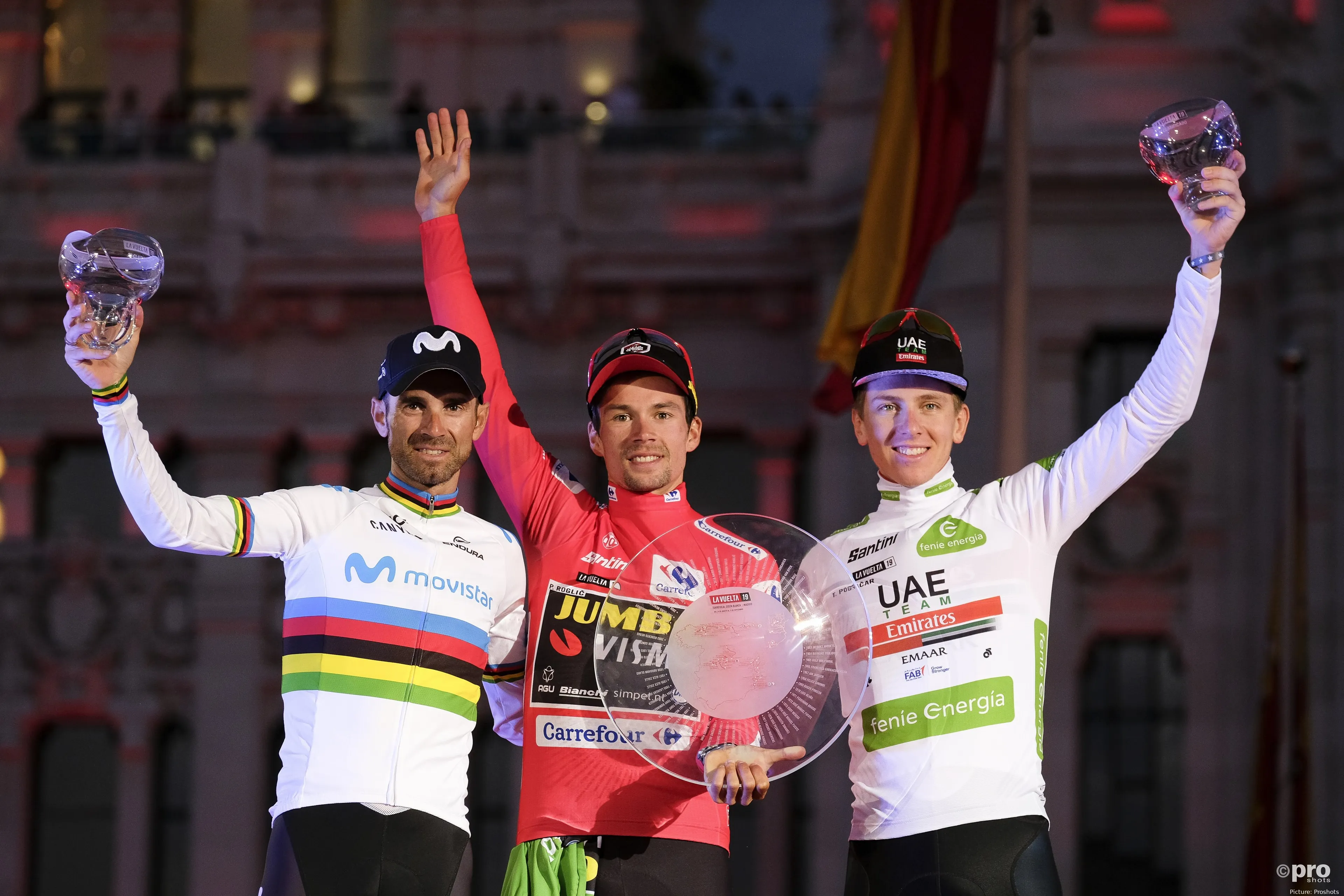
The third and final Grand Tour of the season: the Vuelta a Espana! On the August 19th the Spanish Grand Tour will have it's start in Utrecht, Netherlands, and later go through most of the Spanish territory with it's infamous mountainous and hilly stages, as well as countless scenic days which promise to deliver spectacle on all aspects.
The profiles of the 2022 editions have been published by the race organizers, containing a route that starts off with three days in the Netherlands which will see team time-trial and two flat stages. Back in Spain the race will go through the Basque Country and Asturias until the second rest day, and will later on travel through southern Spain and the Sierra Nevada, before travelling inland towards the central mountain range and the grand finale in the country's capital of Madrid.
Click here to create your own team for the Fantasy Vuelta a España. At least 20,000 Euro in prizes!
Read also

Stage 1 (TTT): Utrecht - Utrecht, 23.2Km
The Vuelta a Espana starts in Utrecht. It will be a team time-trial to
kick things off, 23.4 kilometers in distance and completely flat. It will not
be an easy day however, with teams having to manage and plan how to conduct the
course in the fastest way possible, knowing they have several technical
sections ahead.
In 23 kilometers there will be enough space to put in some time between
teams, and things will open up in the second half where it will be possible to
put the power down in a more organized way. It is rare nowadays to see a team
time-trial, so this should be a good spectacle with the GC riders also urging
to put in as strong times as possible.
Read also
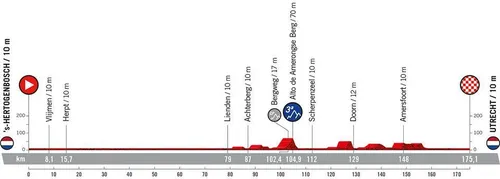
Stage 2: 's-Hertogenbosch - Utrecht, 175.1Km
The peloton will once again finish in Utrecht, however on the second
stage of the Vuelta a Espana it will be at the end of a road stage, with the
start a little far south down in ‘s-Hertogenbosch. It will be an almost
pan-flat day, ideal for the pure sprinters, and should see the first bunch
sprint.
Read also
Most of the day will be on simple wide roads, with only a small hilltop
counting as a fourth category so as to see a KOM classification leader at the
end of the day. With 16.4 kilometers to go there will be an intermediate sprint
with bonifications alongside, which may see a fight to get some minimal seconds,
or a race lead change.
The stage will be mostly about the finale in Utrecht. This time outside
the center, the race will ride through some tricky streets from 6.5 to 2
kilometers to go, which will be tense as crashes can well cause splits in the group
at those points. Into the final 2 kilometers the road straightens out though,
with a slight tilt to the left in the final kilometer for what should be a
regular sprint finish.
Read also

Stage 3: Breda - Breda, 193.2Km
The third day of the race will see a loop around the city of Breda in the southern Netherlands, another simple day which has the potential to be very calm throughout the day, leading up to a furious finale. The stage once again features a small fourth category ascent – if you can call it that – and a bonified intermediate sprint in it’s final half, however except the possibility of wind, there shouldn’t be any stressful factor throughout the majority of the route.
The sprint in Breda will be slightly different, more urban than the second stage, albeit with a less technical approach to the final kilometers. There will be a long straight section into 2.5 kilometers to go where the pace will gradually ramp up. With 2.5 kilometers to go and then 750 meters to go there will be sharp turns to the right where the peloton will stretch out, for a fast run-in to the line.

Stage 4: Vitoria-Gasteiz - Laguardia, 153.5Km
The fourth stage sees the peloton travel to Spain, for more familiar roads. It’s a hilly day into Laguardia, just outside of Logroño, a warm-up for the weeks to come as it features a very rolling terrain and a profile that will lead to a very open stage where a lot can happen. Late attacks can succeed, but a reduced bunch sprint with the GC riders is also expected. The first third of the stage is relatively flat, the last two features some small climbs, but nothing too hard.
The main and most important of the day will be the Puerto de Herrera. It summits with only 14.6 kilometers to go and features bonus seconds at the top which may be to the liking of some. It’s a tricky climb, 6.9Km at 5.1%, but the first half features several sections above 10%. It’s very inconsistent, with a few downhill and flat sections inbetween, but overall not a complicated ascent for those who are used to it – although it will limit those capable of fighting for a result.
The finale though has the potential to be more dangerous, it will be a sharp hilltop finish in the small town, with relatively narrow roads and steep gradients. The run-up to the ramp will be furious, so this won’t be a short effort, however in the climb to the line it averages 8% for almost a kilometer. One suited to the puncheurs, and the GC climbers will also have to grit their teeth not to loose time – or win, depending on the rider.
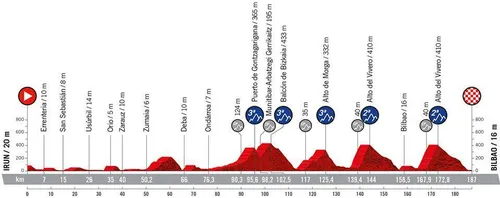
Stage 5: Irún - Bilbao, 187Km
The fifth stage of the Vuelta a Espana will traverse the Basque Country close to the sea. A hilly day, and a traditional finale in Bilbao which will make for an interesting and very open day early in the race. There will be 3000 meters of climbing, it will be no easy day for anyone, with a lot of small ascents in the first half, and the main climbs of the day late on. With 92, 84 and 62 kilometers to go there will be some hilltops, nothing too big however, but it will warm up things and build up some fatigue which will not favour the riders looking to survive and bet on a sprint late in the day. The race will reach the outskirts of Bilbao however and go on a double ascent of one of it’s most famous climbs.
It will be the Alto del Vivero. Will be summited twice, with 43.8 and 13.8 kilometers to go. 4.5Km at 7.9%, with ramps going up as high as 13% through it. It’s a short and sharp climb, hard enough for the GC riders to make moves, but also “gentle” enough for some faster riders to go through the summit close to the front, depending on how the race goes.
There will be bonus seconds at the summit of the final passage however which is likely to stir things up. If any rider manages to get away it will be very hard to bring back, as the following descent will be quite fast and leave the riders with just two kilometers to go. The sprint will then be flat, on urban roads, without too much difficulty as there are no expectations of a large group fighting for the win.
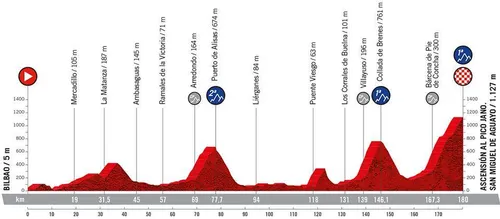
Stage 6: Bilbao - Ascensión al Pico Jano. San Miguel de Aguayo, 180Km
Two hilly days lead into the first mountain stage and true summit finish. It will be an important day for the overall classification, with differences assured, and the true form of the climbers having to be on display with nowhere to hide. The riders will be heading to Cantabria, once again travelling west with a rolling start. The first climb of the day, will summit with 103 (8.1Km; 6.4%) kilometers to go. With 58.7 (39Km; 7.1%) there will be another climb to set things up. The Collada de Brenes will be a warm up to the final climb, a tough ascent however with 6.3 kilometers at 8.6%, with a bonus sprint at the summit however it will be unlikely to be used as it still comes with 35.7 kilometers to go.
The attacks and damage are to come on the ascent to Pico Jano. A climb of two halves, but definitely not an easy one. There will be a false-flat run-up to the ascent, and it’s first 7 kilometers average almost 8%, definitely enough to attack the race. There will be a small flat restbite before the final 4.5Km where the gradients will largely be around thr 7% mark, without any ramps that are too steep throughout it.
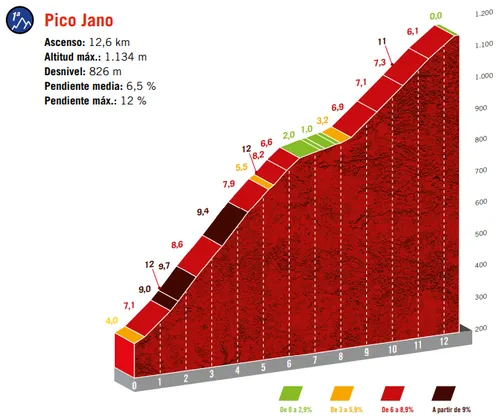
Pico Jano: 12.6Km; 6.7% average gradient
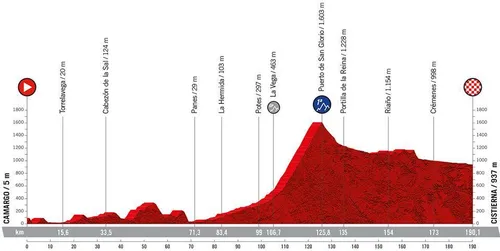
Stage 7: Camargo - Cistierna, 190.1Km
The seventh stage of the Vuelta a Espana will be a very interesting day, with a very unusual profile which can see a very open day, where many riders can succeed and several scenarios can succeed. It will be a long day in the saddle, with a rolling first 65 kilometers which won’t be easy to control for anyone looking to have a sprint in the end. This is a hilly stage however with only one meaningful climb. One that is long and relatively steep, but normally not enough for the GC riders to be attacking. The Puerto de San Glorio is 19.5 kilometers long, with 5.8% in average gradient. It is no easy affair, if at the finish it could make differences. However it comes with 63.8 kilometers to go.
It will be interesting to see if the riders in the peloton will want to fight for the win, as differences can be made here both in front or at the back, but that would also see more complications to have a strong final 60 kilometers of the stage. The dynamics will be interesting, as there is no true descent after the climb, just a small downhill trend into Cistierna.

Stage 8: La Pola Llaviana/Pola de Laviana - Colláu Fancuaya, 154.5Km
The peloton will head into the Asturias with a very complicated day. Until now it will be the most difficult of stages, with a total accumulate of 3700 meters of climbing in only 155 kilometers, with six categorized climbs to tackle. The day starts off with a difficult climb, the Alto de la Colladona which features 7 kilometers at 6.3% and will give the opportunity for a strong breakaway to form right in the opening kilometers. Then with 106 (7.2Km, 6%), 88 (5.8Km, 5.3%). 56 (5.9Km, 5.5%) and 40 (3.8Km, 7.9%) there will be the summit of several ascents which will futher cause some damage in the peloton, however likely to not see any serious moves.
The final ascent to Colláu Fancuaya will be where the day’s decisions are to be made. The run-up to it will once again not be simple, with a false-flat section and a very fast descent before the base. 10.2Km at 7.8%, a tough ascent, with a particularly steep section between 6 and 5 kilometers to go where the gradients go above the double digits. In the final kilometers it doesn’t get any easier however, with a very complicated finale which will be important for the GC.
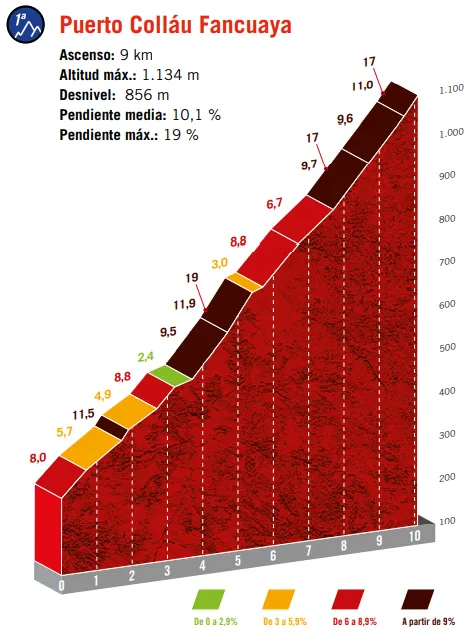
Colláu Fancuaya: 10.3Km; 7.9% average gradient
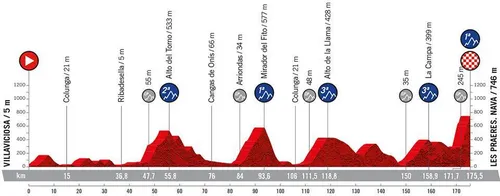
Stage 9: Villaviciosa - Les Praeres. Nava, 175.5Km
The ninth day will be the last in the north of Spain, and although it doesn’t look like the traditional mountain day, it will be a very important one for the GC as the race will head deep into the rugged mountains of the Asturias en route to tackle on of it’s hardest and steepest ascents. The start of the day is not flat, however it will get much worst in the second half. 116 (8.3Km, 5.7%), 78 (10Km, 5.5%) and 52 (6.7Km, 5.2%) will be important climbs for the KOM classification, a quick sequence of ascents however none of them being overly long.
The climb to La Campa will summit with 23 kilometers to go, it won’t be complicated but it will feature a bonified sprinter at the top, and will further thin down the peloton. The group should remain relatively big however, and that will play a role in the furious leadout that is expected towards the final climb.
That will be to Les Praeres. As some would say, a goat track – a suiting description since the finale is located in a wide grassland inside the mountains. Officially it is a 3.9Km climb at 12.6% average gradient, incredibly steep however the first two 2.5 kilometers are mostly around gradients of 15%, a brutal effort from start to top where the peloton will just slowly be grinded until only the very best sit in front. It’s a 15-minute ascent, so the riders cannot risk gong into the red too early. Inside the final kilometer there’s a small flat section, but the brutal ramps go almost all the way into the finish.

Les Praeres: 3.8Km; 13% average gradient
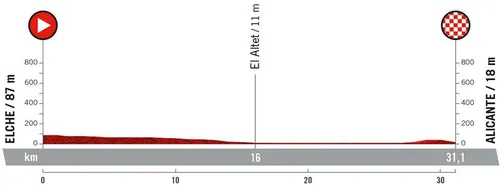
Stage 10 (ITT): Elche - Alicante, 31.1Km
The tenth of the Vuelta a Espana will see the riders in the opposite side of the country, now in the southeast as the Mediterranean coast now will host the peloton. It will be the race’s only individual time-trial, and one where gaps will be created and can be very important.
After a week of complicated racing in the mountains, the time-trial will be completely flat and a big change to the legs of the riders who’ve been constantly pushing hard. The 31-kilometer route will start in Elche and head towards the sea, and the second half of the time-trial will be by the sea. It will finish in the popular coastal city of Alicante, and the riders will cross the city before going through a rolling section in the final two kilometers where some seconds can still be won or lost.

Stage 11: ElPozo Alimentación - Cabo de Gata, 193Km
Stage 11 will have the peloton travel into Andalusia, with some flat and desert-like landscape hosting the peloton in the second day of the second week of the race, one that should be to the liking for the sprinters as it features little climbing. The start takes place at El Pozo Alimentacion, and will see the peloton travel southwest near the coast of the Mediterranean. The route features some small hilltops, however nothing too big or meaningful in any way, with no categorized climb and a bonified intermediate sprint placed only 9.8Km away from the finish.
That will be by the sea near Cabo de Gata. The final 4 kilometers will be in a total straight line near the sea, in what will be the least technical finale one could imagine. That can be a good factor when it comes to safety, however the wind may play a big role as the road will be fully exposed.
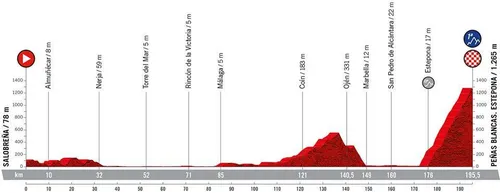
Stage 12: Salobreña - Peñas Blancas. Estepona, 195.5Km
A transition day is what some may call it, as stage 12 sees the riders head further and further into the southwest of Spain. The route will mostly follow the Mediterranean coast as was the case in the previous day, however the difference is that a summit finish has been placed. 193 kilometers on the menu, by no means a short day, and one which will feature a difficult rolling start which may see many suffer if the pace is high. There is little more to point out through the day however, with the city of Malaga to be crossed halfway through the day, but it will all be about the final climb.
That will be just outside of Estepona, the ascent to Peñas Blancas. Officially it is 18.9 kilometers at 6.5% a serious mountain ascent that takes the riders from sea level to 1260 meters of altitude in the coastal mountains. It is a climb that’s relatively constant. It does feature some areas with a little smaller and higher gradient, but there is never truly much restbite, and the long effort will weigh on the legs of many on what is the first mountain stage of the second week where the fatigue will start to be felt on some riders.
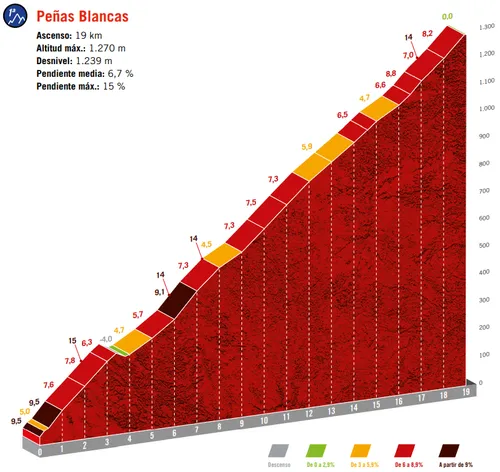
Peñas Blancas: 19.8Km; 6.3% average gradient
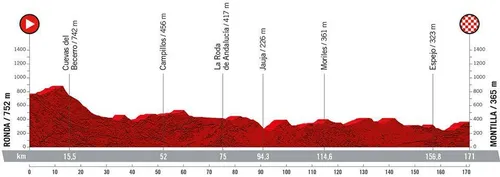
Stage 13: Ronda - Montilla, 171Km
Stage 13 of the Vuelta will be an interesting one, with a stage that is very much typical of the Vuelta with a very open finale. On paper, a day for the sprinters, some at least, however the route is full of ‘rompe-piernas’ roads which constantly feature small ascents throughout the entire day. For that reason there are 1800 meters of climbing despite not featuring a single categorized climb, however it should be a fast day. The start in Ronda is at altitude and is by no means flat, and then throughout the rest of the day there will be rolling terrain. With 14.6 kilometers to go there will be a bonified intermediate sprint in Espejo that may see some action in case there is no breakaway up to this point.
However, it will all be about the final climb. Uncategorized, of course, however it is one the fast men will feel and not all will survive. The final 6.6 kilometers have an uphill tilt to it, with false-flat gradients for much of the finale, it will put some riders in the hurt.
The roads will flatten out until the final 700 meters, but it will kick up once again from there on with a 5% average until the finish. The finishing straight will also be short, and it is expected to be a very explosive finale where the puncheurs but also some GC riders should get in the mix at the end.
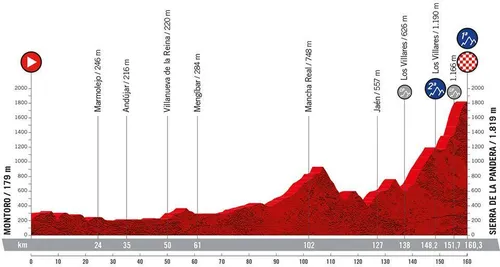
Stage 14: Montoro - Sierra de la Pandera, 160.3Km
The mountains of Andalusia will have a crucial role at this Vuelta. The final two stages of the second week will be highly mountainous, with two summit finishes that can change the outcome of the race completely. This day will be perhaps the easiest of both, most will say. However not an easy feat in any way, with 3300 meters of climbing, most of them consolidated in the final half of the stage. The start in Montoro won’t have any meaningful ascent to cause trouble to the riders, that will come later in the day.
As the riders head closer to Sierra de la Pandera they will find three hilltops, climbs that aren’t categorized but will be felt in the legs - specially of those who are not on a good day. The final ascent then can be described in several ways, however officially it is a string of ascents, the first being the Puerto de Los Villares which features 10 kilometers at 5.5% and summits with 11.8 kilometers to go, having bonus seconds available at the top. Due to the short descent that follows, which can be considered more as a small resting section, the climb to Sierra de la Pandera only starts officially afterwards.
It is 8.6 kilometers at 7.5%, significantly harder than the previous, with the addition of the accumulated fatigue. It’s an inconsistent climb, with gradients of over 10% in several sections and a clear section between 4.6 and 2.6 kilometers to go where it doesn’t come down from those ramps. It’s clear where the attacks should come mostly, as the ascent will then slightly come down, with an explosive final ramp set to decide the day’s winner.
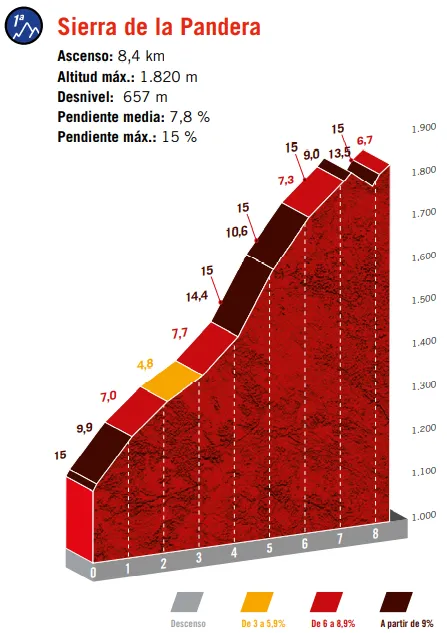
Sierra de la Pandera: 8.5Km; 7.6% average gradient
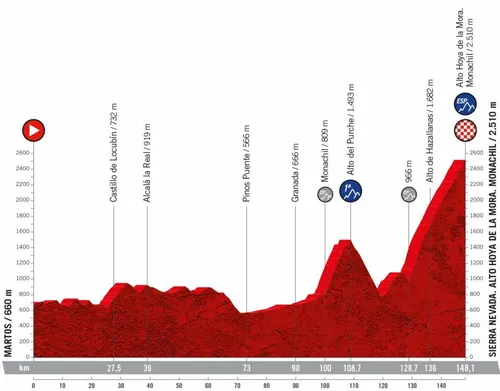
Stage 15: Martos - Sierra Nevada, 148.1Km
Perhaps the queen stage of the Vuelta a Espana? There will be plenty stages where real gaps can be made, however surely will have this day in mind for a long time, and many will fear the climbs they will face. It is a day where the race can both be won or lost, as it features the terrain for it, with 4000 meters of climbing, mostly packed in the final third.
A short day however with only 150 kilometers on the menu, a rolling start as is typical, and a small climb 34 kilometers away from the start which should set the race into a stable position. The riders will go down to Granada, and the mountains around it will host the finale of the stage. The first ascent will be the Alto del Purche, a familiar climb to the Vuelta a Andalucia, it is 9 kilometers long at 7.5%, however that features a small but steep descent close to the summit. In reality is a climb that 6 kilometers at around 10% gradient, with more inconsistent starts and finishes, a brutal ascent, which summits with 39.2 kilometers to go.
The riders will have little time to recover however. What will follow is a technical descent, immediately onto an uncategorized climb to Guéjar Sierra, where the run-up to the base of the final climb is a very technical and steep little descent, straight into the brutal ramps of the final climb. Sierra Nevada will host the finish, but the riders will climb via the Alto de Hazallanas which features it’s first 5 kilometers at over 10% average gradient with countless switchbacks. A very explosive ascent at the bottom, favourable for attacks, however it is a climb that will be almost an hour long and the effort must be managed. The climb is in total 19.4 kilometers long at 7.9%, and after it’s steep start it never features any restbite, and the last third becomes a straightforward ascent with no locations to surprise. A gruelling test of climbing prowess, a day for the pure climbers to show what they’re made of.
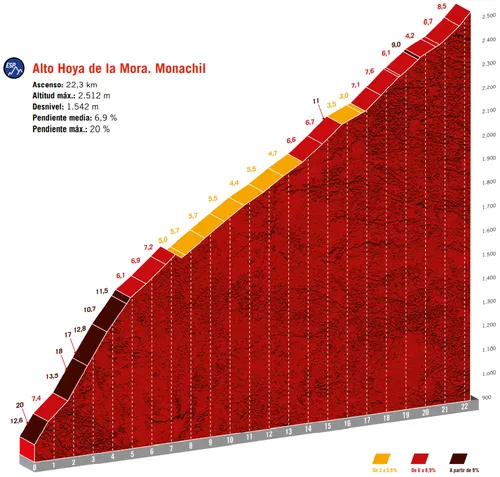
Sierra Nevada: 19.5Km; 7.9% average gradient

Stage 16: Sanlúcar de Barrameda - Tomares, 188.9Km
Stage 16 is a tricky day at the Vuelta, with one of it’s flattest stages in it’s grand majority, and a stinging finale that will not be to the liking of many. It will be the first day of the final week which will kick off quite explosively. The start in Sanlucar de Barrameda is rather flat, one of the easiest starts of the race actually, and throughout the first 175 kilometers there will be little to note, with all the action set to be packed in the finale into Tomares, on the outskirts of Sevilla. Inside the final 15 kilometers there will be a sharp hilltop, but it’s expected to see the fireworks go off only later.
It is a very hard finale to manage and one which should be very open. A little pitch of 600 meters at 8% will have it’s finale with only just over a kilometers to go, which will then lead to a short string of technical streets the riders will have to navigate into the final ramp. The uphill drag to the line in Tomares will not be gruesome, however the riders will enter it already near or in the red. The gradients will pitch up to 4% at the line, on what will be a difficult urban circuit.
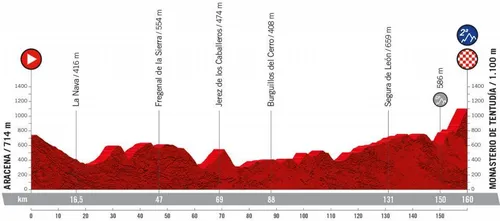
Stage 17: Aracena - Monasterio de Tentudía, 160Km
The peloton will travel further north into Extremadura for an interesting day. It will be a very hot and dry day certainly as the peloton will ride through a rather unpopulated part of Spain, however the competition will remain fierce as the riders will tackle a hilly profile. Starting in Aracena, the riders will not find pan-flat terrain, instead a slight tilt either uphill or downhill for the first half of the day where the breakaway will be settled. The second half won’t be too different, however most will be eying a specific point of the day as the riders arrive near Tentudía.
The run-in will feature many small hilltops, however the final climb should decide the stage. Into the Monasterio de Tentudía, the riders will find a very inconsistent climb. The first 2.3 kilometers are at 7.1%, whilst the last 4.1Km are at 7.5%. Officially however, the climb is 9.4 kilometers at 5.2%, meaning the middle section features a bit of false-flat terrain, both up and downhill. However it is a climb for those with a big engine. The only switchback comes in sight of the line, and it is in those final four kilometers that the differences can be made. It will be a scenic finale no doubt, but for there to be gaps the race has to be attacked hard in those kilometers.
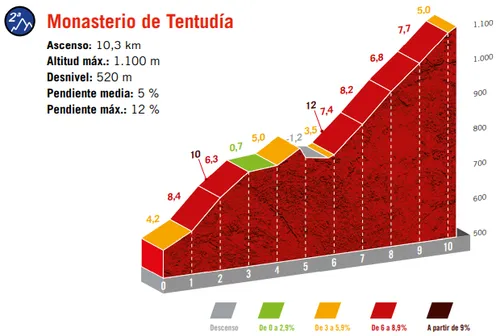
Monasterio de Tentudía: 9.3Km; 5.1% average gradient
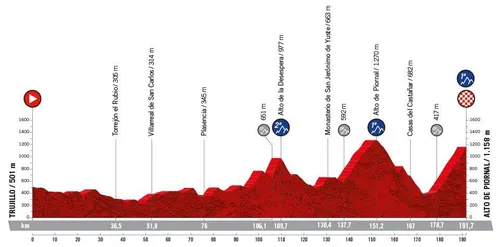
Stage 18: Trujillo - Alto del Piornal, 191.7Km
A very tricky day at stage 18, with a start in Trujillo which will see the riders travel north through a very straightforward and simple empty road, and then a second half which will see all types of ascents. 91 (4.3Km, 5.9%) and 85 (1.5Km, 10.3%) will be the first serious climbs of the day, with a lot of steep gradients involved in what can be a very treacherous section of the day, suited to explosive racing. However the action should come in the ascents to the village of Piornal.
Don’t be mistaken, the Alto de Piornal will be ridden twice but both climbs - and the descent - are completely different. The first climb will feature 13.6 kilometers at 5%, with bonus seconds at the summit which comes with 41 kilometers to go. A fast descent will follow, with a small run-in to the final ascent. For the second time, in a switchback-packed climb, the Alto de Piornal will be climbed now via Valdastillas, with a total of 13.3 kilometers at 5.6%. It’s not the longest climb of the race, or the steepest, but it is tough and comes at the end of a hard day and race. It’s an explosive climb, however one where team support and depth can also play wonders. The riders will go all the way up to the village where the finish line will be placed.
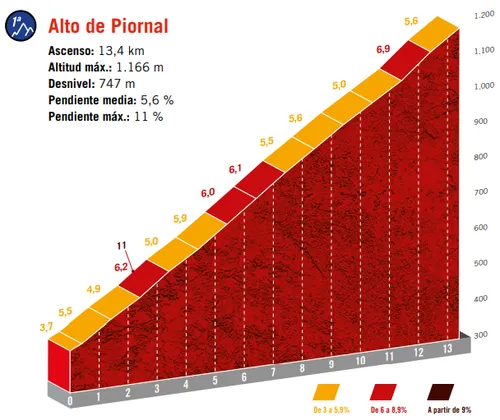
Alto del Piornal: 13.3Km; 5.6% average gradient

Stage 19: Talavera de la Reina - Talavera de la Reina, 132.7Km
With 139 kilometers on the menu, stage 19 will be the shortest road stage of the Vuelta a Espana until now, a tricky day which can be to the liking of many riders and promises exciting racing. The day will revolve around a loop close to the city of Talavera de la Reina which will host the finale of the stage.
After 12 kilometers of racing the riders will face the ascent to Puerto del Piélago. A 19-kilometer climb in total, however split into three different sections, each with an average of around 6%. There will be two small descent sections in the ascent, but the last 9.8 kilometers average 5.9% and will be the place to make the decisive splits. The climb will first summit with 108 kilometers to go, and then with 42 in it’s final passage. It allows for big gaps, aswell as tactical play between the GC riders. The descent that follows features some little hilltops, however is mostly a fast and non-technical descent, which will take the riders down to the finish quickly. The last 15 kilometers of the stage will be flat, giving the opportunity for the race to stabilize before reaching the finale.
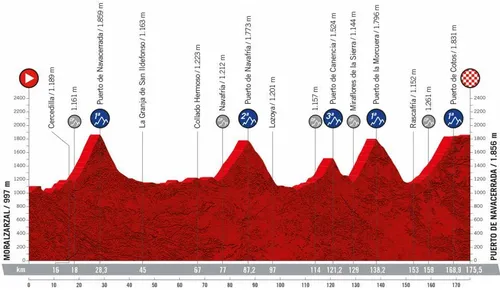
Stage 20: Moralzarzal - Puerto de Navacerrada, 175.5Km
The final mountain stage of the Vuelta. At the end of three weeks of racing it will be a complicated day, but the Sierras de Madrid often offer dramatic race, and with 4000 meters of climbing on the day that will be a make-or-break ride for many. The first 25 kilometers of the day aren’t overly hard, but the Puerto de Navacerrada will open things up with 10 kilometers at 6.8%. It will set up for the day, packed with climbs that aren’t overly hard or overly steep, but are combined quite difficult. A long flat section will anticipate the Puerto de Navafria (10Km, 5.5%) which will have it’s summit with 87 kilometers to go.
The race willl then enter it’s crucial section, with 54 kilometers to go the riders will go over the Puerto de Canencia (7.3Km, 4.8%) and shortly after the Puerto de Morcuera which has 9.2 kilometers at 6.8%, and a bonus sprint at the summit with 37.7 kilometers to go. It’s perhaps the most difficult climb of the day, and a technical descent follows. It’s an explosive ascent, however there will be another opportunity to create the difference.
That will be at the Puerto de Cotos, the last serious climb of the race. 10.5 kilometers at 5.6%, not a brutal ascent but this combination saw Tom Dumoulin loose the 2015 Vuelta. This final climb will finish with 6.7 kilometers to go, and a small plateau section will have the riders end the stage in the Puerto de Navacerrada.
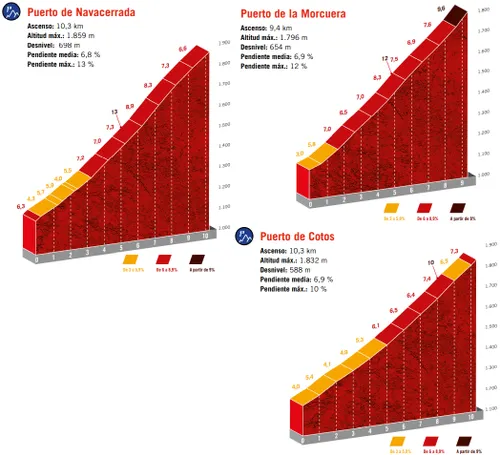
Puerto de Navacerrada; Puerto de Morcuera and Puerto de Cotos
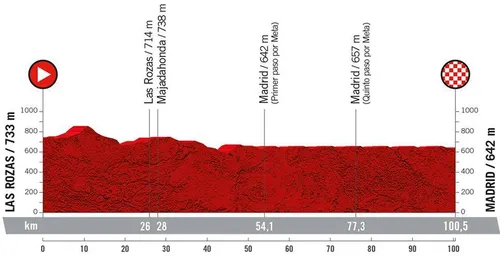
Stage 21: Las Rozas - Madrid, 100.5Km
The riders will finally reach the capital, Madrid. It was a hard race, but with an easy day to wrap things off in what should be a calm day for the riders, but a furious and fast finale for the sprinters.
The day will see the peloton ride into the city where they will tackle a 5.8-kilometer circuit a total of nine times. The riders will have an 180 degree turn with 3.5 kilometers to go and a sharp right hander with 2.4 which will be natural selection points, with the bunch stretching out. The final straight will be 1.1 kilometers long after a long roundabout, with the bunch sprint set to be a regular one, hopefully with no crashes in sight.
claps 1visitors 1
Just in
Popular news
Latest comments
- he’s not wrong. Nys took his best shot, and missed. MVDP is only going to get better Nys is a finished product.mij16-12-2025
- I think Mads is about there on talent vs all riders, except Tadej. but he has beaten MVDP in a world championship race and was the first to win it. I would not sell Mads short.mij16-12-2025
- does he ever see any of these races LOL unless he immediately recognizes who the undisputed leader is? unless Tadej doesn’t show up, or crashes out, Florian will never have a chance at Roubaix or MSR. nor should he. Tadej has earned the right to be undisputed king of UAEmij16-12-2025
- great news ...Davide15-12-2025
- looks goodDavide15-12-2025
- It's so easy to say all of those things about someone in retrospect.
 santiagobenites15-12-2025
santiagobenites15-12-2025 - You never want to get Mads…mad.Oldguyonavelo15-12-2025
- Hope this works out for Gee. Seems like Lidl Trek could be a little muddled this yearmobk15-12-2025
- "Questions will arise over whether Ayuso rides as Lidl-Trek’s outright leader or works in support of Skjelmose" Why is there a question? We already know he will not ride in supportmobk15-12-2025
- Being Pogi's mechanic would be absolutely terrifying. he wins like 90% of the races he enters and if there is a loss due to mechanical issues especially in the GTs/Monuments , you are going to get the bootabstractengineer15-12-2025
Loading
Write a comment



